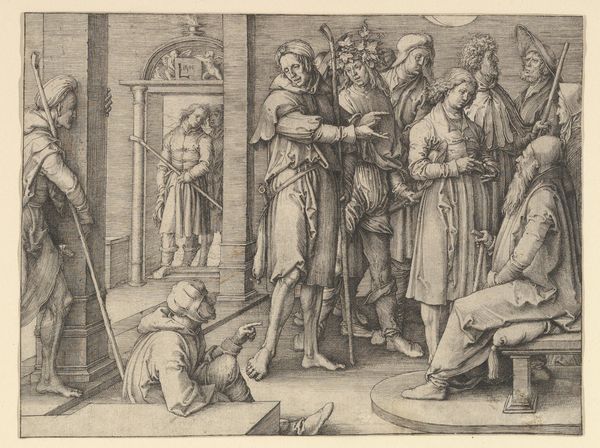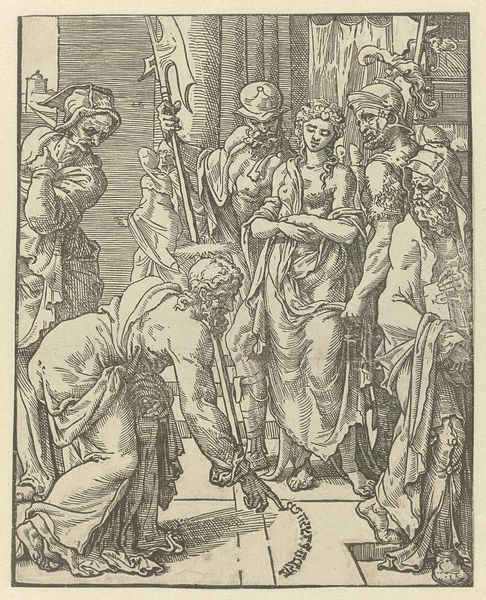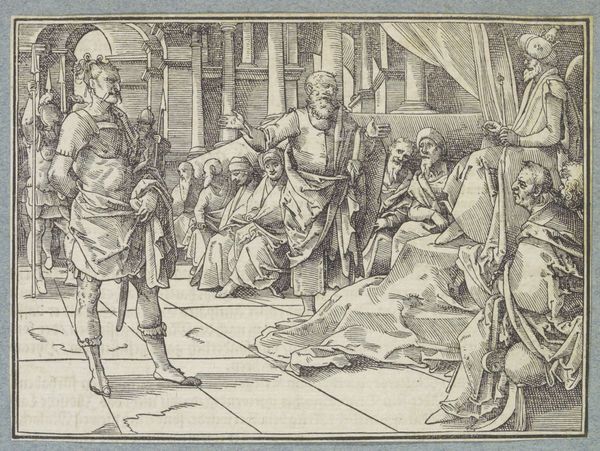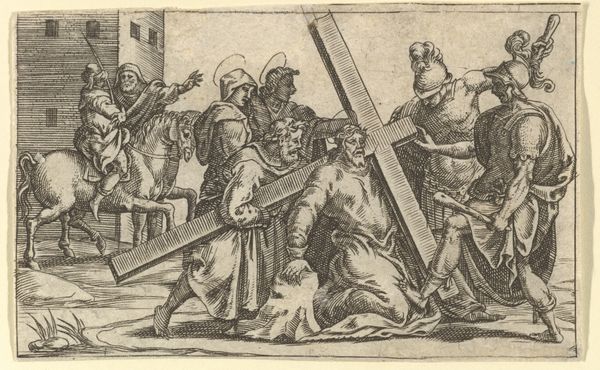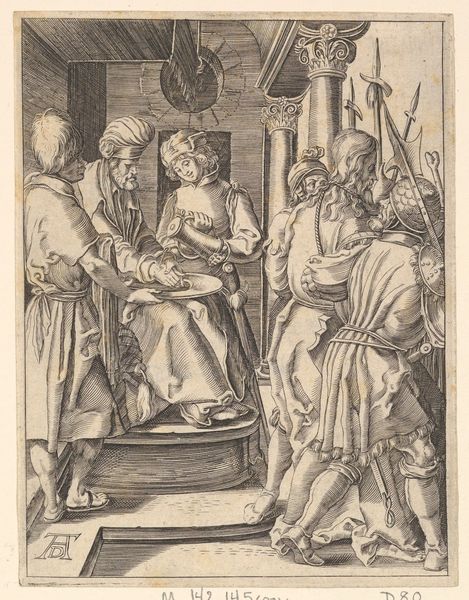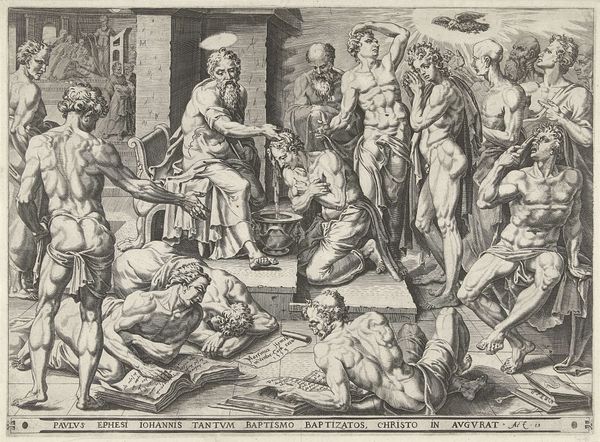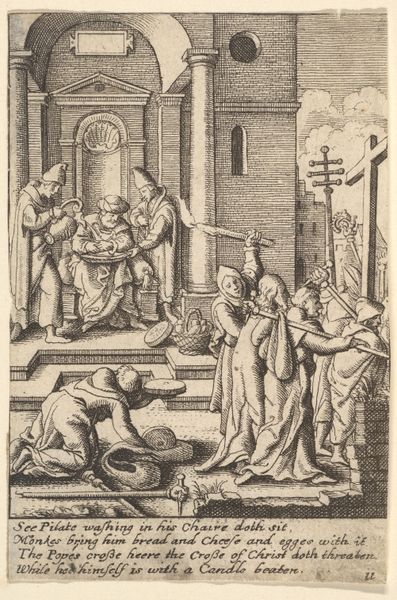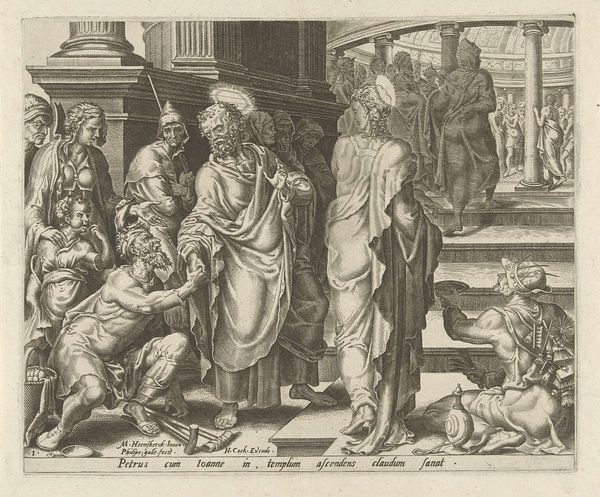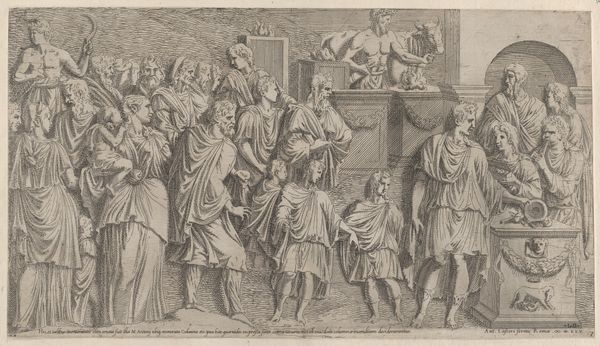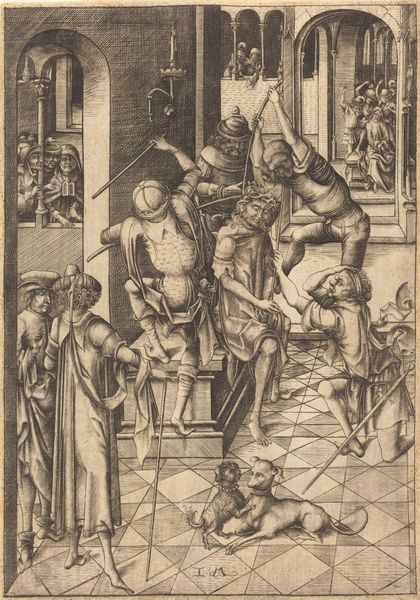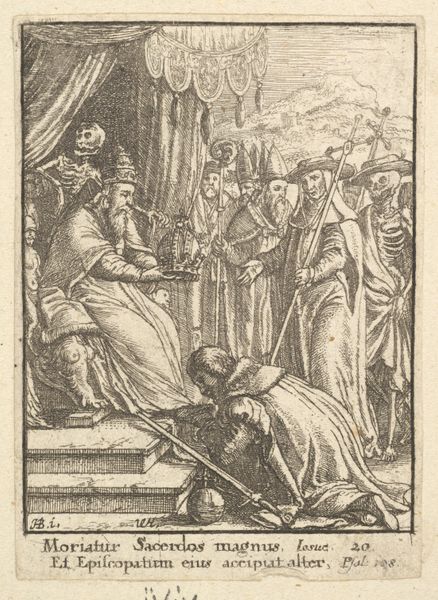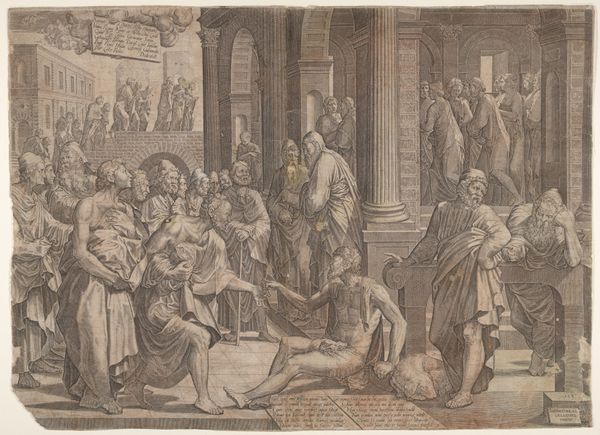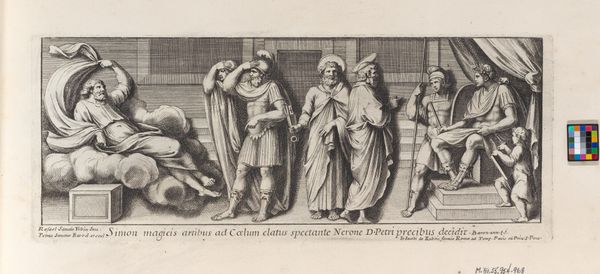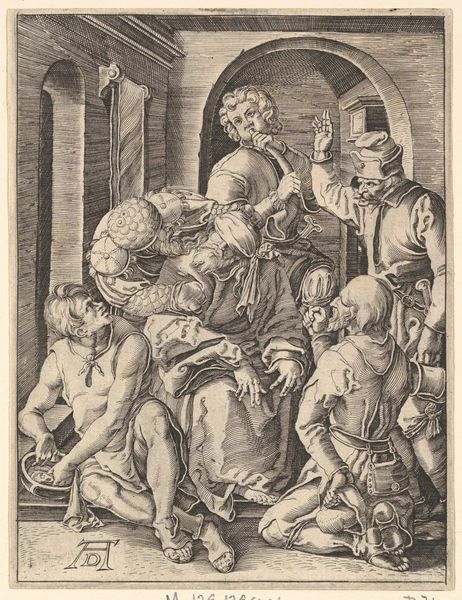
Joseph Interpreting His Dreams to Jacob (copy) 1489 - 2006
0:00
0:00
drawing, print, engraving
#
drawing
#
narrative-art
# print
#
figuration
#
northern-renaissance
#
engraving
Dimensions: sheet: 4 15/16 x 6 5/8 in. (12.5 x 16.8 cm)
Copyright: Public Domain
Curator: Lucas van Leyden’s engraving, "Joseph Interpreting His Dreams to Jacob," made between 1489 and 2006, presents a complex narrative scene. My first impression is its incredible detail, particularly the varied textures achieved solely through line work. There’s a stark quality, almost theatrical, to the staging of these figures. Editor: Indeed. That level of detail speaks volumes about the engraving process itself. Think of the labor involved: the meticulous carving of the metal plate, the inking, the printing. This was a commodity, produced and disseminated, connecting the artist to a broader market. Curator: Precisely. And it allows us to examine how power operates within the domestic sphere. Note the central positioning of Joseph as an advisor, interpreting his dreams to Jacob in the domestic scene, flanked by a large audience. How is this narrative of faith intertwined with potential themes of generational knowledge, obedience, and the anxieties of power? Editor: I’d add that Joseph’s story—imprisonment, then sudden ascent to power—resonated strongly in a time of intense social and economic upheaval. This work is, in essence, about immigration, assimilation, and faith under duress, and it speaks to much larger ideas surrounding religious conversion and salvation. Curator: Let’s also not forget the material culture depicted within. The clothing, the staff, the seating. These are indicators of social status. Leyden carefully represents the visible signs of the characters’ positions within their community and reinforces these social constructs by placing them within the intimate gathering in their home. Editor: Looking closely at their clothes, you notice clear lines. This wasn't about idealized forms; it was about reflecting reality. How did that approach change perceptions, make these narratives relatable to specific classes and professions, especially given prints were increasingly accessible. Curator: In short, this print, both a commodity and a reflection of its time, opens up so many fascinating avenues for interpretation, connecting art making and access to art to power structures, generational differences, and themes of faith and assimilation in a complex time. Editor: Agreed. From the labor of its creation to the layers of meaning it holds, Leyden’s work reminds us that even seemingly simple images can reveal a complex world when approached with mindful analysis.
Comments
No comments
Be the first to comment and join the conversation on the ultimate creative platform.
